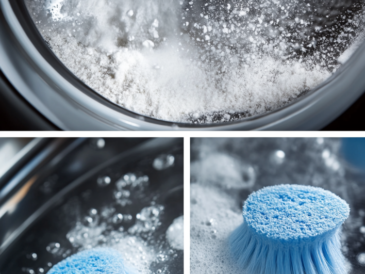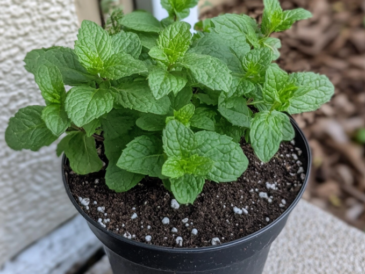Mother-in-Law’s Tongue (Sansevieria) is a hardy, low-maintenance plant known for its striking upright leaves and air-purifying properties. While it’s often kept for its foliage, many plant owners are unaware that Sansevieria can produce delicate, vanilla-scented flowers. However, encouraging this plant to bloom requires the right care and conditions. In this guide, we’ll explore expert tips on making your Mother-in-Law’s Tongue bloom and ensuring its fragrance lasts longer. 🌿✨
🌞 Location and Light: Finding the Perfect Spot
Proper lighting is crucial for promoting flowering in Sansevieria.
✅ Bright Indirect Light: Place your plant near a window that receives bright but indirect sunlight. East-facing windows are ideal.
✅ Direct Sunlight: While Sansevieria can tolerate low light, a brighter location encourages blooming. If your plant remains upright without leaning, it may need more light.
✅ Growth Rate: Sansevieria is a slow grower, typically producing only three to four new leaves per year. If your plant is growing too slowly, evaluate its light exposure.
💡 Pro Tip: If natural light is insufficient, consider using a full-spectrum grow light to boost growth and flowering potential.
💦 Watering: The Right Balance
Sansevieria is drought-tolerant, meaning less is more when it comes to watering.
✅ Check the soil moisture: Only water when the substrate is completely dry.
✅ Seasonal Adjustments: In winter, reduce watering to twice a month to prevent root rot.
✅ Drainage Matters: Use a well-draining potting mix with perlite or sand to avoid water retention.
🚫 Avoid Overwatering: Excess moisture can lead to root rot, which prevents the plant from blooming.
💡 Pro Tip: Use a moisture meter or stick your finger into the soil—if it’s dry up to two inches deep, it’s time to water.
🌱 Fertilizing: Boosting Blooming Potential
To encourage flowering, provide essential nutrients during the growing season.
✅ Use a balanced liquid fertilizer formulated for flowering plants once a month from late spring to early fall.
✅ Choose the Right Nutrients: Look for fertilizers with higher phosphorus (P) and potassium (K) content, which promote flowering and strengthen the plant.
✅ Organic Alternatives: Try banana water or homemade citrus peel fertilizer (recipe below!) to enrich the soil naturally.
💡 Pro Tip: Avoid over-fertilizing in winter, as the plant enters a dormant phase and doesn’t need extra nutrients.
✂️ Pruning: Maintaining Plant Health
Proper pruning helps prevent disease and keeps your plant looking its best.
✅ Do Not Cut the Leaf Tips: Sansevieria’s tips are essential for nutrient flow. Cutting them can stunt growth.
✅ Remove Only Dry or Yellow Leaves: This prevents diseases and keeps the plant healthy.
✅ Wipe Leaves Regularly: Dust accumulation can block light absorption and slow down photosynthesis.
🏺 Transplanting: When and How to Repot
Repotting Sansevieria helps improve root health and provides space for growth.
✅ Repot Every 2-3 Years: Choose a slightly larger pot when the plant becomes root-bound.
✅ Best Time to Repot: Early spring is ideal, as it allows the plant to adjust before active growth begins.
✅ Use Clay Pots: These improve drainage and prevent excess moisture buildup.
💡 Pro Tip: Add broken clay pieces or small rocks at the bottom of the pot to enhance drainage and prevent root rot.
🌿 The Amazing Benefits of Sansevieria
Sansevieria is not just a stunning houseplant—it also provides several health benefits! 🌟
✅ Purifies the Air: Removes toxins like benzene, toluene, xylene, and formaldehyde.
✅ Improves Indoor Humidity: Helps maintain balanced air moisture, reducing respiratory issues.
✅ Boosts Oxygen Levels: Unlike most plants, Sansevieria releases oxygen at night, making it an excellent choice for bedrooms.
✅ Pest Resistant: Rarely attracts pests, making it an easy-care option for all plant lovers.
🍋 DIY Special Fertilizer for Enhanced Blooming
Want to enhance your Sansevieria’s flowering potential? Try this homemade citrus peel fertilizer! 🌱🍋
Ingredients:
✅ 3 lemon peels (without pulp)
✅ Water
Instructions:
- Wash and dry the lemon peels.
- Cut them into small pieces.
- Spread the pieces evenly over the soil in the pot.
- Water using lemon water or plain water.
- Place the plant in a cool location with indirect light.
- Repeat once a month for optimal results.
Benefits of Lemon Fertilizer:
✅ Repels Pests naturally 🐜❌ ✅ Acts as a Natural Herbicide 🌿 ✅ Prevents Fungal Infections 🍄 ✅ Boosts Root Health 🌱
🍌 How to Make Banana Water Fertilizer
Banana water is an easy and effective organic fertilizer that enriches the soil with potassium and phosphorus.
Ingredients:
✅ Banana peels 🍌
✅ Glass container
✅ Water
Instructions:
- Place banana peels in a glass jar.
- Fill the jar with water and cover.
- Let it sit overnight to extract nutrients.
- Use this water every 15 days to nourish your plant.
Benefits of Banana Water:
✅ Promotes stronger leaves and stems 🌱
✅ Encourages flowering 🌸
✅ Provides essential nutrients 💪
🌟 Final Thoughts
Caring for Mother-in-Law’s Tongue is simple when you understand its needs. By providing adequate light, proper watering, and nutrient-rich fertilizers, you can encourage beautiful, vanilla-scented blooms. With these expert tips, your Sansevieria will thrive and become a stunning addition to your indoor space.
✨ Want to learn more plant care secrets? Continue reading to discover advanced techniques for propagating Sansevieria and boosting its air-purifying abilities! 🌱➡️




